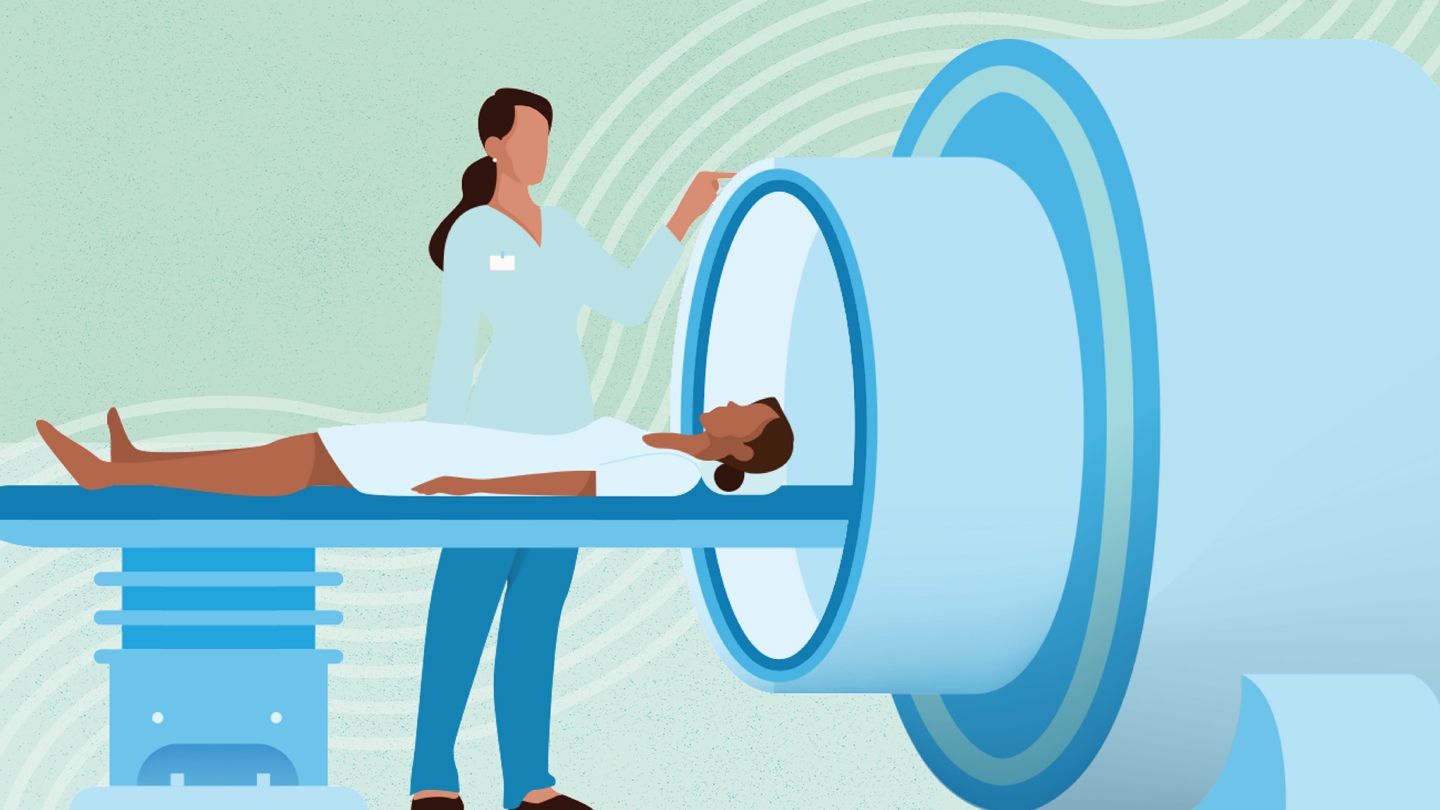Scheduled for an MRI? You may be wondering what to expect.
It’s not uncommon to be anxious about having an MRI. A “closed” MRI involves being slid into a cylindrical tube and staying there for a half hour or longer — an experience that can feel claustrophobic for many. In an “open” MRI, you’re positioned between two large, flat magnets, one above you and one below you, with nothing to either side of you. An open MRI alleviates the claustrophobia for many people, but the images aren’t as clear as in a closed MRI. So, for some tests, a closed MRI is necessary. Here are some things to know that can help put your mind at ease before your appointment.
1. MRIs Are Loud
You may hear clanking and banging during an MRI, but there are ways to tune it out so you can relax.
“Noise-canceling headphones or foam or silicone earplugs can block out some of the noise,” says Raj Dasgupta, MD, an associate program director of internal medicine residency at Huntington Health in Pasadena, California. Alternatively, you may want to listen to calming music while inside the MRI tube.
2. Anxiety Is Normal
“A good tech will walk you through everything step-by-step and check in with you during the scan. Some places offer open MRIs, which are less claustrophobic, or give you a button to press if you need a break, Dr. Dasgupta says.
Below are a few tips that could help ease your stress before and during the imaging.
- Let your doctor know ahead of time that you’re anxious. They might suggest medication to help you relax.
- Close your eyes. As simple as it sounds, keeping your eyes closed throughout the imaging can keep you from fixating on the tight space.
- Bring a friend. You may need permission from the hospital or office, but having someone you trust nearby can ease some of your worry.
- Do deep breathing exercises. Focusing on your breath instead of your surroundings can help you relax.
3. Things Made of Metal Can Cause Problems
Loose metal objects, such as jewelry and piercings, can injure you during an MRI when they’re pulled toward the very powerful MRI magnet.
“These can interfere with the magnetic field the MRI uses and also pose a potential safety risk,” Brynna Connor, MD, a family medicine practitioner in private practice in Austin, Texas.
4. Makeup-Free Is Best
While makeup is generally safe, some cosmetics contain metals that can interact with MRI magnets.
If you want to go the extra mile, you can also minimize your use of hair products, antiperspirants, and sunscreens — which may also contain metals — on the day of your test.
5. Tattoos Can Burn
“It’s important to let the MRI technician know about any tattoos, especially if they’re large or near the area being imaged, and if they were done using metallic ink, as metallic ink can potentially heat up during the scan,” Connor says.
6. Radiation Is Not an Issue
According to Connor, MRIs are the best option to look at soft tissue, which is why they are often used for evaluating neurological, musculoskeletal, and cardiovascular issues.
“X-rays are preferred over CT scans or MRIs for initial assessments of bone fractures, dislocations, or to check for foreign objects, due to their speed, lower cost, and availability,” he adds.
7. Some MRIs Use Contrast Dye
An MRI with contrast involves injecting a dye into the bloodstream via an IV. Doing this version of the scan increases the visibility of:
- Tumors
- Inflammation
- Infection
8. Incidental Findings Are Typical
Incidental findings are things that show up during the MRI scan but aren’t causing issues. This may sound scary, but they’re common and generally don’t require any further action.
“It’s not uncommon to have an incidental finding as a result of an MRI, particularly when scanning areas like the brain or abdomen,” says Connor.
According to Dasgupta, sometimes these findings lead to another scan for a closer look, but most of the time, they turn out to be harmless.
9. A Repeat Scan May Be Necessary
The Takeaway
- MRIs are imaging tests that look at internal organs and structures. They are pain- and radiation-free.
- Anxiety is common, but there are ways to address it.
- It’s important to remove piercings, jewelry, and other removable metal items before the test.
- Talk with your doctor ahead of time if you experience anxiety or claustrophobia.
Read the full article here




